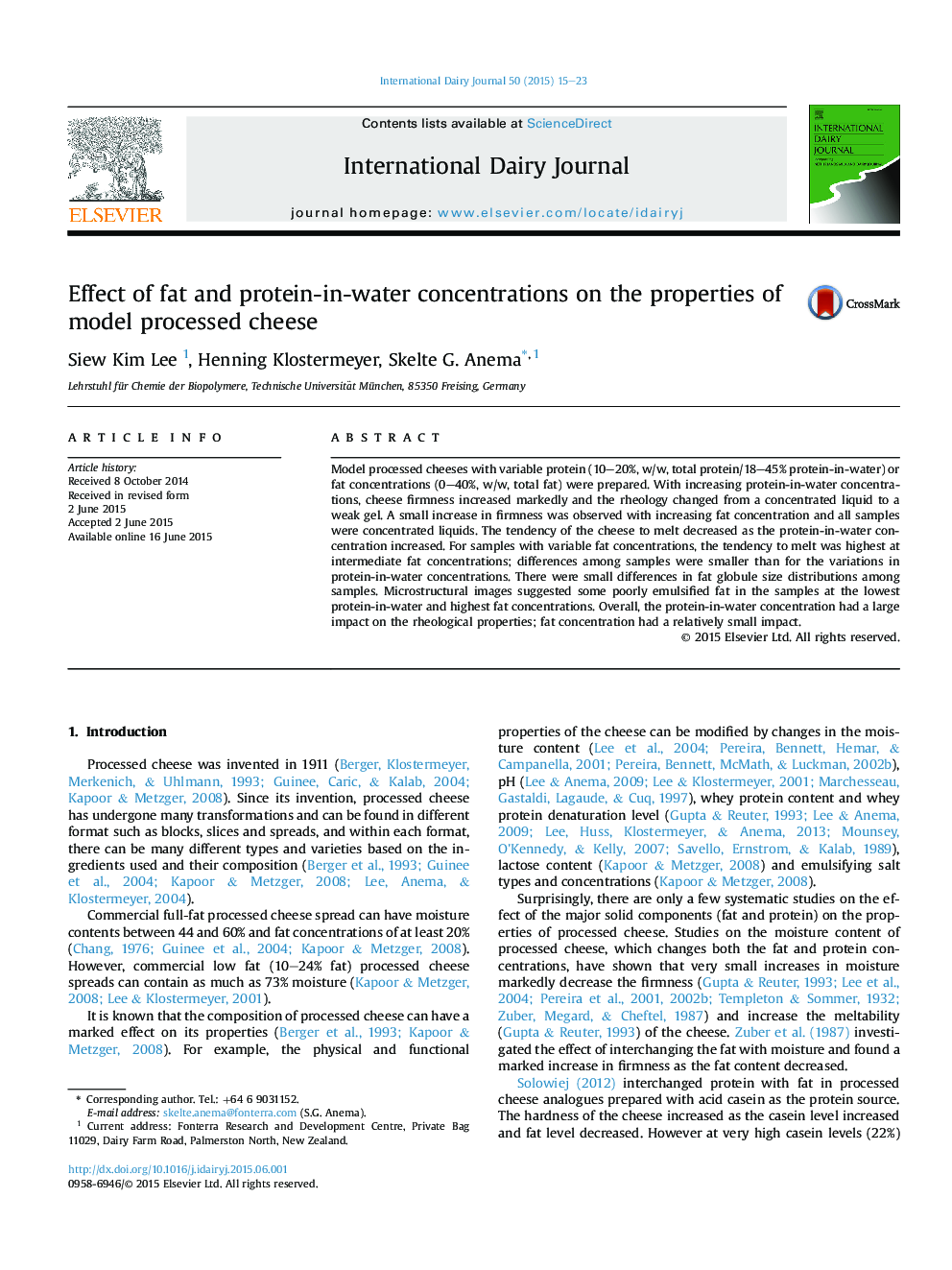| Article ID | Journal | Published Year | Pages | File Type |
|---|---|---|---|---|
| 2434059 | International Dairy Journal | 2015 | 9 Pages |
Model processed cheeses with variable protein (10–20%, w/w, total protein/18–45% protein-in-water) or fat concentrations (0–40%, w/w, total fat) were prepared. With increasing protein-in-water concentrations, cheese firmness increased markedly and the rheology changed from a concentrated liquid to a weak gel. A small increase in firmness was observed with increasing fat concentration and all samples were concentrated liquids. The tendency of the cheese to melt decreased as the protein-in-water concentration increased. For samples with variable fat concentrations, the tendency to melt was highest at intermediate fat concentrations; differences among samples were smaller than for the variations in protein-in-water concentrations. There were small differences in fat globule size distributions among samples. Microstructural images suggested some poorly emulsified fat in the samples at the lowest protein-in-water and highest fat concentrations. Overall, the protein-in-water concentration had a large impact on the rheological properties; fat concentration had a relatively small impact.
